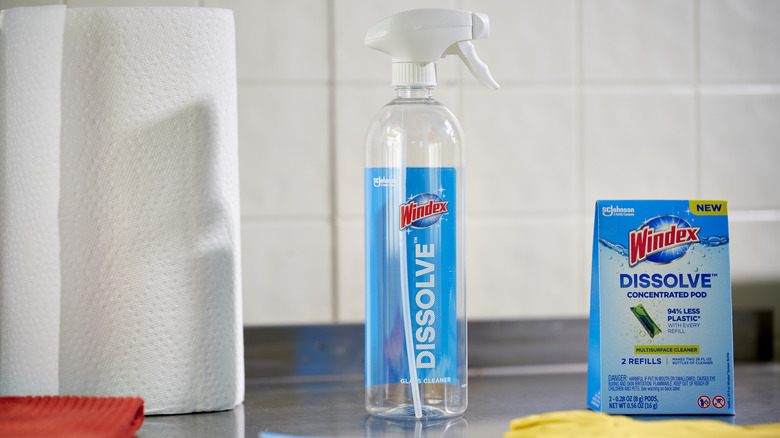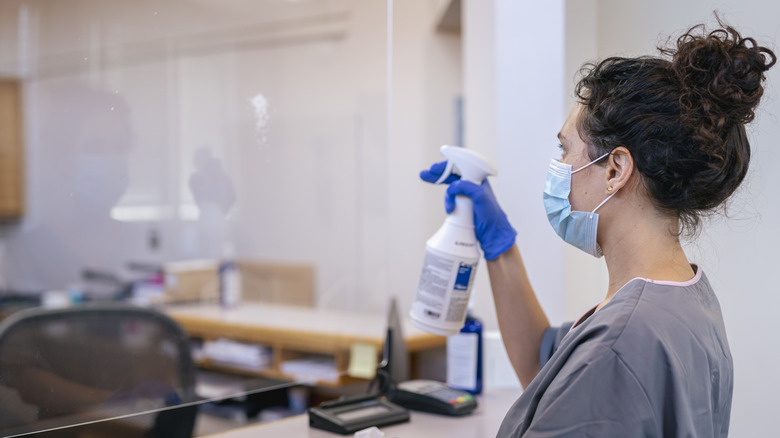Why You Should Avoid Cleaning Plexiglass With Windex
Plexiglass is an excellent alternative to regular glass. It looks similar and is very durable, but you still need to be careful with how you clean it. You don't have to worry about plexiglass shattering, but some products can ruin its shiny finish. Windex is one particular glass cleaner that you need to stay away from. It contains ammonia, which will eat into the acrylic that plexiglass is made out of — the more you use it to shine the surface, the cloudier it'll look.
The harsh chemicals in many window cleaners are harmful to plexiglass, so the simple solution is using just soapy water. In many cases, plexiglass is a better option than glass – it's 10 times more impact resistant than regular glass, making it more durable. Plus, it's not as dangerous if it does break because the shards are dull rather than sharp. Moreover, plexiglass is also very lightweight, so you can use it in many areas where traditional glass might be dangerous.
Ammonia makes plexiglass look cloudy
Keeping your plexiglass items in tip-top shape means avoiding cleaners containing ammonia. This dangerous ingredient is included in many formulas because it works well on glass. It causes the cleaner to evaporate off the surface quickly, leaving it shiny and without any streaks or residue. Over time products like Windex will destroy plexiglass because the ammonia melts the plastic. You also want to avoid glass cleansers that contain alcohol for similar reasons. When applied to acrylic, it creates microfractures that blur it instead of leaving it clean and shiny.
Products that contain ammonia have the potential to harm more than just plexiglass. It's a toxic ingredient that can cause health problems that become more severe with increased exposure. It becomes airborne when you spray it, similar to how you would apply it to glass or plexiglass, then you and any children or pets in your home breathe it in. The CDC explains that you may suffer respiratory and skin irritation, and it can also worsen pre-existing conditions like asthma and allergies. To prevent ammonia from harming you and your surfaces, it's better to avoid cleaners like Windex and other similar brands like Sprayway and Zep.
Use ammonia-free formulas or stick to just soapy water
There is an option for using Windex throughout your home. All you have to do is check the label to ensure you're purchasing the ammonia-free formula. They may also be labeled as an environmentally friendly version of your usual window cleaner. These versions are safe to use on acrylic since they don't include ingredients that would damage your plexiglass instead of making it shine.
If you'd rather stay away from all commercial glass cleaners for your plexiglass surfaces, you can DIY your own. Simply fill a spray bottle with water and a few drops of a mild cleanser, like dish soap. Then apply it to the plexiglass like you're using Windex. Another option is to dilute distilled white vinegar with water. It'll give your homemade cleanser the extra power it needs if the other recipe isn't strong enough. Make sure not to use paper towels to wipe up these solutions if you want the best results, as they could leave scratches in the acrylic. Instead, use a microfiber cloth or lint-free rag. If you really want the plexiglass to shine, finish by buffing it with a clean, dry microfiber cloth.


